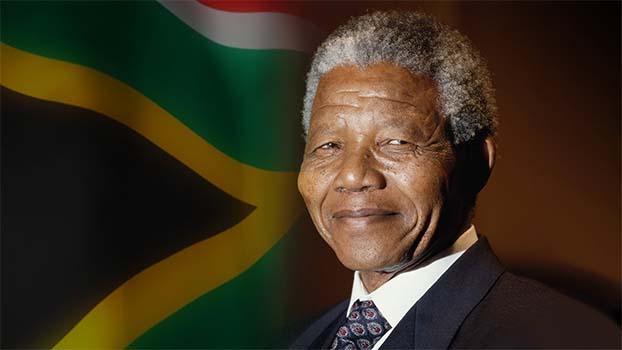This Day In History
Nelson Mandela dies at 95

On December 5, 2013, Nelson Mandela, the former activist who overcame a nearly three-decade prison stint to become president of South Africa, passes away after years of struggling with health issues. He was 95.
Mandela was known as a freedom fighter, prisoner, civil rights leader, political leader and symbol of integrity and reconciliation not only for South Africa, but for the world.
His lifelong mission to end apartheid started when he left school early to join the the African National Congress (ANC). He rose quickly in the organization, and was elected president of the organization in 1950. It was in 1960 that Mandela’s efforts turned more militant, sparked when police opened fire on a group of unarmed protestors in the Sharpeville township, killing 69 people.
Soon after, the ANC was outlawed, but that didn’t stop Mandela. After the ban, he went underground to form a new, armed wing of the organization named “Spear of the Nation.” Through this group, which was also known as the MK, Mandela helped plan attacks on government institutions, like the post office.
The violent turn was not one he took lightly. “It would be wrong and unrealistic for African leaders to continue preaching peace and nonviolence at a time when the government met our peaceful demands with force,” he said about starting the more militant branch. “It was only when all else had failed, when all channels of peaceful protest had been barred to us, that the decision was made to embark on violent forms of political struggle.”
In 1962, Mandela secretly left South Africa, traveling around Africa and England to gain support. He also trained in Morocco and Ethiopia. When he returned, he was arrested and charged with illegal exit of the country and incitement to strike. He was then sentenced to life in prison for sabotage and conspiracy to overthrow the government.
While he was in prison, a “Free Nelson Mandela” campaign fueled the outcry against the regime.
After his release, Mandela resumed his leadership of the ANC in its negotiations for an end to apartheid. Incredibly, just four years after his release, on May 10, 1994, he was inaugurated as South Africa’s first democratically elected President.
As president, Mandela introduced social and economic programs and presided over the enactment of a new constitution that established a strong central government and prohibited discrimination. He also discouraged black South Africans from seeking revenge for the apartheid period, preaching kindness and forgiveness instead. Mandela only served one term in order to set an example for future leaders, but he remained in the nation’s consciousness until his death.
Dozens of officials world leaders expressed their grief over Mandela’s passing. The funeral and burial cap took place over 10 days of national mourning. On December 15, tribal leaders clad in animal skins stood alongside officials in dark suits as Mandela's coffin, which was draped with the South African flag, was buried in his childhood village of Qunu. —History




